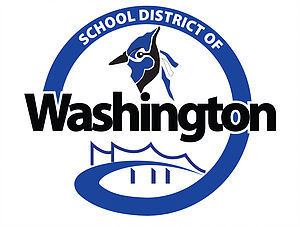
Many factors are considered when the decision to cancel school is made, just as careful consideration is given to when the days will be made up. On the surface, the decisions we make might seem simple, when in fact, that isn’t necessarily the case.
Many ask why snow routes are not more of a common place. The answer to that question is safety.
The School District of Washington is 257 square miles in size, with many roads that have no shoulder or guard rails. Snow routes would mean the children (nearly half of our enrollment rides the bus) would be standing at snow route bus stops on roadways like Hwy 94, Hwy KK, Hwy T, Hwy A, Hwy BB, Hwy YY, etc. We just don’t feel this is a good option.
Some would also assume that all children are waiting for their bus within the comforts of a car with a parent. But the fact is many children see themselves off to school as the parent leaves for work before they get on the school bus.
Here is an exhaustive list of considerations prior to closing school:
Road conditions, both main roads and secondary roads
Bus stop safety
Buses running on time, delays
Bus turnarounds, likelihood of accident or breakdowns
Temperatures (buses not starting, mechanical failures)
Forecast
Timing of precipitation
Attendance trends (School Districts must consider attendance rates for accountability and state reporting purposes)
Condition of the District’s 11 school building parking lots at the time of arrival or dismissal
People with whom we consult:
First Student Bus Company
Buildings and Grounds staff
Area superintendents
State, county and city road departments (when applicable)
National Weather Service
Local Weather Outlook
When poor weather moves in during the evening, we drive our attendance areas (teams assembled by First Student and Superintendent Dr. Lori VanLeer) to check our biggest trouble spots typically between 6-9 p.m. The road conditions at 9 p.m. are rarely different than the road conditions at 5 a.m. the next day when the buses are preparing to roll out. VanLeer seeks the comfort level of the bus drivers through Marty Marks, First Student Manager. We drive roads in the morning as well, however, if the decision can be made in the evening, families can make arrangements more easily. In addition to main roads, we analyze secondary roads, subdivisions and turn-around locations as well. Morning monitoring and road checks typically begin at 3:30 a.m. as a decision must be made, preferably by 5 a.m. First Student begins executing the morning elementary routes as early as 5:45 a.m. as they are in route to their first pick-up location.
Why does the District not consider a late start schedule? There are several reasons why the District doesn’t utilize a late start schedule. The first is road conditions do not improve in rural areas a great deal between 5-8 a.m., and it becomes extremely difficult to predict if they actually will by the time the buses begin executing the routes. The School District of Washington runs a two-tiered bus routing system, therefore the late start times would vary because elementary and secondary schools start at different times. We also have a few combined routes to consider. We have found this to be extremely confusing to parents and not a favorable option.
The decision regarding school make-up days:
The academic calendar is designed to accommodate for 6-8 make up days per year. In most cases, this is an adequate amount of make-up days. In rare instances, the inclement weather forgiveness rule (law) prevails (as explained below).
Here is a list of considerations in determining make-up days:
Calendar committee determines initial make-up schedule
Modifications made to the approved calendar when circumstances call for such
Compliance with state requirements for days/hours of attendance at all levels of instruction (DESE required calculations for attendance hours used)
Attendance (held accountable to DESE for maintaining high attendance as part of our MSIP accountability requirements)
Make-up day common sense (For example, if the last day of school falls on a Monday, adjustments may need to be made if applicable and within the rules)
Inclement Weather Forgiveness – 2018-2019
The definition of inclement weather includes: snow, ice, extremely cold temperature, flooding and tornadoes. It does not include excessive heat or illness.
The law reads that every school day missed must be made up until you miss the seventh day. At that point, one day must be made up for every two days missed until 13 days are missed. After the 13th day, no more days are required to be made up. (Note: New regulations will go into effect for the 2019-2020 school year and will be reflected in the 2019-2020 academic calendar once approved by the Board of Education).